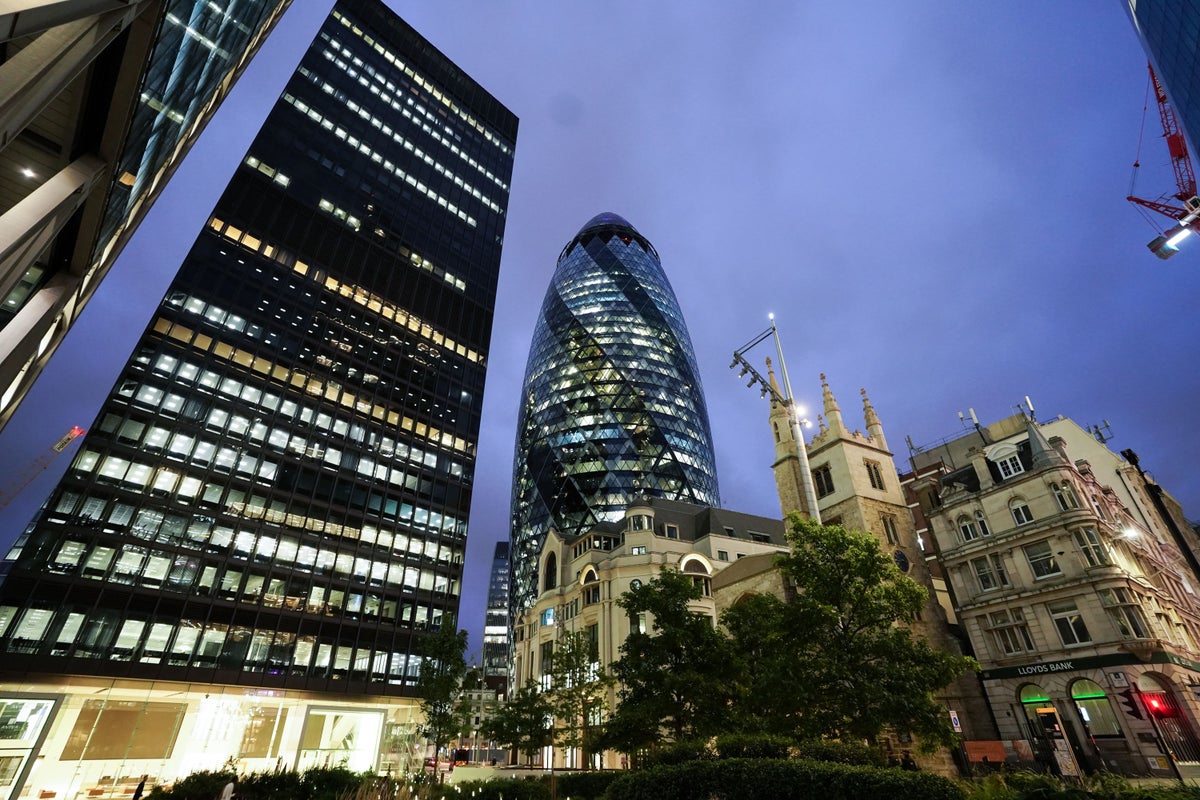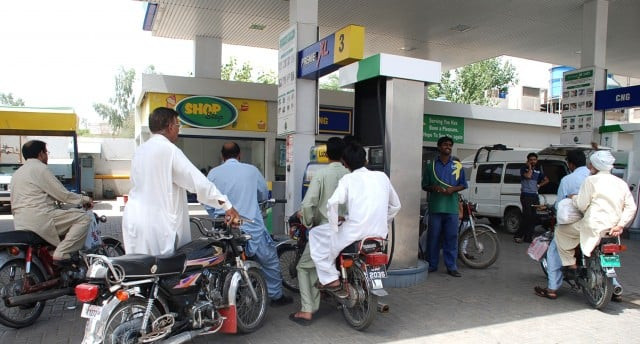Business
Floods to famine: how 2025 could trigger economic crisis | The Express Tribune

LAHORE:
Pakistan is staring down the barrel of a food security emergency that could ripple through every layer of its economy. The catastrophic monsoon floods of 2025 have submerged vast swathes of the country, from Punjab’s wheat belt to Sindh’s rice-growing districts and parts of Khyber-Pakhtunkhwa.
Over 2,000 villages have been inundated, displacing millions, wrecking farmland, and wiping out critical infrastructure just as the summer harvest reached its peak.
The destruction is staggering. Entire standing crops of wheat, cotton, rice, maize, and sugarcane have been destroyed. In Punjab alone, 80% of the country’s wheat production is now at risk. Sindh’s rice fields and fodder supplies are underwater, while Khyber-Pakhtunkhwa has lost tens of thousands of acres of maize and vegetables.
Livestock losses are mounting, with fodder destroyed and surviving cattle starving. Farmers are reporting personal losses in the millions, collectively wheat farmers alone have seen over Rs2.2 trillion wiped out since last year.
The ripple effects are already visible in markets nationwide. In Lahore, Karachi, and Peshawar, staple food prices have spiked 30% to 70%, with shortages of vegetables, milk, and meat now commonplace.
For urban consumers, the pinch is immediate and painful. For rural producers, the pain is existential, as fields, homes, livestock, and seed stores have been swept away.
Tens of thousands of families now live in makeshift camps, with their livelihoods gone and no clear path to recovery. If left unsupported, millions risk falling below the poverty line, a repeat of the 2022 floods which pushed nine million Pakistanis into poverty, according to World Bank estimates.
The economic stakes are immense. Agriculture contributes 24% of Pakistan’s GDP and employs 40% of the workforce. The loss of this year’s harvest will not just hurt farmers; it will force Pakistan to import vast quantities of wheat, vegetables, and cotton, straining foreign exchange reserves and driving up the import bill.
At the same time, export earnings will collapse as rice and cotton surpluses disappear. This dangerous combination, higher imports and falling exports, threatens to widen the current account deficit and weaken the rupee.
Inflation, which had eased to 4.1% in July 2025 after painful reforms, is now set to surge again. Government officials are bracing for food inflation to return to double digits by October, with shortages of wheat and fresh produce driving price shocks. Urban and rural consumers alike will feel the squeeze, and political tensions are certain to rise as household budgets buckle under the pressure.
The floods also pose a fiscal nightmare. Relief and reconstruction costs will run into hundreds of billions of rupees, forcing the government to divert funds from other priorities or take on new debt. Under an IMF programme, fiscal space is already limited. Every rupee spent on relief is a rupee not spent on development, creating a vicious cycle of stagnation and instability.
Making matters worse, policy missteps have amplified the crisis. At the very moment when Pakistan needed stability and strategic reserves, the government moved to dismantle Passco, the only institution capable of safeguarding emergency wheat stocks and stabilising prices. Passco’s warehouses, which once held two million tons of grain, are being liquidated under IMF dictates.
Simultaneously, the abolition of the Utility Stores Corporation has stripped millions of poor households of access to subsidised food. This has left farmers at the mercy of profiteering cartels and consumers defenseless against runaway inflation.
The World Bank’s latest report warns that climate shocks are now the single biggest threat to Pakistan’s macroeconomic stability. Floods are no longer rare, one-off events, they are recurring economic shocks that depress growth, widen deficits, and push millions into poverty. The 2025 disaster is a textbook case – rising inflation, mounting imports, shrinking exports, and deepening social instability.
There are still steps that can prevent a slide into famine. Emergency imports of wheat and vegetables, temporary price controls, and targeted cash transfers to vulnerable families can stabilise the situation in the short term. Equally critical is direct support for farmers – seeds, fertiliser, and credit must be provided immediately so the upcoming Rabi winter wheat crop is not lost. Without this, Pakistan will face even deeper import dependency and food insecurity in 2026.
Longer term, Pakistan must finally invest in climate resilience. Flood defences, drainage systems, climate-smart seeds, and reliable strategic reserves are not luxuries; they are necessities for national security. As the World Bank notes, economic planning must now treat climate volatility as a core structural challenge, not a peripheral issue.
The 2025 floods are not just another disaster. They are a stark warning. If Pakistan does not act decisively, this year’s tragedy will not only wash away crops and homes, it will erode the very foundations of our economy and leave the nation vulnerable to the next inevitable shock.
The writer is a graduate of the University of British Columbia
Business
WPP woes keep lid on FTSE and pound extends falls

The FTSE 100 extended its winning run to nine, recouping early hefty falls, despite fresh problems for advertising group WPP.
The FTSE 100 index closed up just 3.92 points at 9,760.06, another record close.
The FTSE 250 ended down 171.99 points, 0.8%, at 22,276.28, and the AIM All-Share closed down 3.09 points, 0.4%, at 769.80.
WPP plunged 17% as it warned performance in the year-to-date was at the “low-end of expectations” as it cut the company’s outlook.
The London-based advertising agency firm said revenue in the third quarter fell 8.4% to £3.26 billion, and was down 3.5% on a like-for-like basis.
Revenue less pass-through costs slumped 11% to £2.46 billion, falling 5.9% like-for-like.
New chief executive Cindy Rose acknowledged that recent performance was “unacceptable” and pledged to take action to address this.
“There is a lot to do,” Ms Rose said, adding, “we are optimistic, energised and confident that we’re building the right plan”.
It is the latest in a series of troubled days for WPP investors with shares down 63% in the last 12 months.
In European equities on Thursday, the CAC 40 in Paris closed down 0.5%, while the DAX 40 in Frankfurt ended little changed.
Stocks in New York were mixed with a 9.7% fall in Meta Platforms weighing on the S&P 500 and Nasdaq.
The Dow Jones Industrial Average was up 0.5%, the S&P 500 index was 0.3% lower, and the Nasdaq Composite was down 0.8%.
Meta, which owns Facebook and Instagram, forecast increased investment and higher operating costs ahead after a third quarter distorted by a hefty tax provision.
Chief executive Mark Zuckerberg told investors he feels the right strategy is to “aggressively front-load building capacity”.
Investors also weighed hawkish comments from Federal Reserve chairman Jerome Powell who pushed back against market pricing for another interest rate cut in December.
Mr Powell, speaking after the Fed cut rates by a quarter point at its October meeting, said a reduction in December was not a “foregone conclusion” and a cut should not be assumed.
JPMorgan analyst Michael Feroli said: “By Powell’s standards, these were unusually blunt remarks.”
While Bank of America said Mr Powell pushed back “stridently” against market pricing of a December cut and drove the message home “several times” during the press conference.
The US rate call came ahead of central bank meetings in Japan and Europe.
The Bank of Japan kept interest rates unchanged, decided by a seven to two majority vote.
In a statement released by BoJ following the monetary policy meeting, it said interest rates were held at 0.5%, matching consensus cited by FXStreet.
“High uncertainties still remain regarding the impact of trade and other policies on economic activity and prices at home and abroad,” the BoJ said in a statement following the decision.
While in Europe, the European Central Bank left rates on hold for a third meeting in a row stating its outlook for inflation is broadly unchanged.
The decision by the Frankfurt-based lender leaves the interest rates on the deposit facility, the main refinancing operations and the marginal lending facility unchanged at 2.00%, 2.15% and 2.40% respectively.
The widely expected decision is the third hold in succession by the ECB, following similar outcomes in July and September.
Prior to the hold in July, it had cut for seven meetings in a row.
Deutsche Bank Chief European economist Mark Wall said “despite the US tariffs, despite all the various sources of uncertainty, the European economy continues to eke out some growth”.
“Economic ‘resilience’ is keeping the ECB doves in check, and the policy pause on the rails,” he said.
Mr Powell’s comments put the dollar on the front foot and pushed bond yields upwards.
The pound was quoted at 1.3149 dollars at the time of the London equities close on Thursday, lower compared to 1.3236 dollars on Wednesday.
The euro fell to 1.1565 dollars from 1.1660 dollars.
Against the yen, the dollar was trading at 154.11 yen, higher compared to 152.10 yen.
The yield on the US 10-year Treasury was quoted at 4.09%, widening from 4.00% on Wednesday.
The yield on the US 30-year Treasury was quoted at 4.64%, stretched from 4.57%.
Back in London, lender Standard Chartered rose 1.9% after stating it expects to reach its return on tangible equity target in 2025 instead of by 2026.
Chief executive officer Bill Winters said progress was broad-based and highlighted strong double-digit growth in Wealth Solutions and Global Banking, alongside good momentum in Global Markets.
On the FTSE 250, Computacenter gained 5.0% as it said it performed strongly in the third quarter with continued momentum in North America, improvements in the UK, and a return to growth in Germany.
Ithaca Energy and Harbour Energy rose 4.6% and 3.3% respectively after a report in the Financial Times said the UK Government could scrap its windfall tax on the oil-and-gas sector one year earlier than planned.
Meanwhile, conditional dealing in lender Shawbrook Group began in London.
Shares closed at 396 pence, well above the 370p offer price, giving it a market value of just over £2 billion.
Unconditional dealing on the London Main Market will begin on Tuesday next week.
TT Electronics was a star performer, soaring 59% after accepting a £287 million takeover approach from Cicor Technologies.
Bronschhofen, Switzerland-based Cicor develops, and manufactures electronic components, devices, and systems.
Woking, England-based TT, which also manufactures electronic components, said the cash and shares offer values each share in TT at 155p.
Brent oil was quoted at 64.92 dollars a barrel at the time of the London equities close on Thursday, up from 64.52 dollars late on Wednesday.
Gold was little changed, trading at 3,998.00 dollars an ounce against 3,997.24 dollars on Wednesday.
The biggest risers on the FTSE 100 were Airtel Africa, up 6.4 pence at 274.8p, Auto Trader, up 15.2p at 808.8p, Centrica, up 3.3p at 179.8p, Standard Chartered, up 28.0p at 1,544.0p, and GSK, up 31.0p at 1,783.0p.
The biggest fallers on the FTSE 100 were WPP, down 61.7p at 298.85p, JD Sports Fashion, down 3.32p at 95.0p, Whitbread, down 80.0p at 2,967.0p, Segro, down 14.4p at 699.7p and Burberry, down 26.0p at 1,280.0p.
Friday’s global economic calendar has Canada GDP data, eurozone inflation figures and the Chicago PMI in the US.
There are no significant events scheduled on Friday’s UK corporate calendar.
– Contributed by Alliance News
Business
US markets today: Wall Street drifts near record highs as Big Tech results; Trump-Xi trade talks pull investors in both directions – The Times of India

US markets ended mixed on Thursday, with investors juggling upbeat and cautious signals from Big Tech earnings and renewed optimism around US-China trade ties.The S&P 500 slipped 0.2% from its all-time high earlier this week, while the Nasdaq composite lost 0.6%. The Dow Jones Industrial Average, however, gained 199 points, or 0.5%, by mid-morning trade, AP reported.Markets were reacting to comments from US President Donald Trump, who called his meeting with Chinese President Xi Jinping a “12 out of 10” and announced plans to reduce tariffs on Chinese goods. Analysts, however, warned that despite the warm rhetoric, structural trade tensions remain unresolved.“The result was fine, but fine isn’t good enough given the expectations going in,” said Brian Jacobsen, chief economist at Annex Wealth Management. “The results were more like small gestures instead of a grand bargain.”Big Tech weighs on sentimentTech stocks saw sharp divergences after earnings. Meta Platforms tumbled 11.3%, wiping off part of its 28% gain this year, as investors reacted to higher spending plans for 2026. Microsoft fell 2.5% despite reporting stronger quarterly earnings and revenue, with concerns about slower Azure growth and rising investment costs.Alphabet bucked the trend, rising 5.3% after reporting better-than-expected profit and revenue. Together, Alphabet, Meta, and Microsoft make up nearly 14.5% of the S&P 500’s total market value — meaning their moves can swing the broader market.Broader movers and macro watchChipotle Mexican Grill slumped 18% after trimming its sales growth forecast, citing “persistent macroeconomic pressures.” In contrast, Eli Lilly rose 1.7% as strong sales of its diabetes and obesity drugs Mounjaro and Zepbound boosted profits, prompting an upward revision to its annual guidance.Sherwin-Williams gained 2% after beating profit estimates despite a “softer for longer” demand outlook, while Visa advanced 1.5% on stronger-than-expected results.Fed caution lifts bond yieldsThe 10-year US Treasury yield rose to 4.09% from 4.08% the day before, after Federal Reserve Chair Jerome Powell said a December rate cut “is not a foregone conclusion.” Traders still expect a rate reduction later this year, but with less certainty, according to CME Group data.In Europe, France’s CAC 40 dropped 0.9% and Germany’s DAX shed 0.2% after the European Central Bank held rates steady. Japan’s Nikkei 225 closed nearly flat after the Bank of Japan also kept its policy unchanged
Business
Former Asda boss Roger Burnley appointed director at M&S

Former Asda boss Roger Burnley is to join the board of Marks & Spencer.
He will become a non-executive director of the high street giant from December 1, the company told shareholders on Thursday.
The retail veteran was the boss of rival Asda from 2017 until 2021, when he left the business following its £6.8 billion takeover by the Issa brothers and TDR Capital.
He was retail operations director at Sainsbury’s before moving to Asda and is currently a non-executive director at Pets at Home.
Mr Burnley will become the latest supermarket heavyweight to join the business, after former Sainsbury’s boss Justin King stepped down earlier this year.
Mr King left the board in September after around six years.
The appointment comes after a turbulent year for Marks & Spencer after it was hit by a major cyber attack which forced it to shut down online sales for around six weeks.
It said the attack has cost the company around £300 million.
Mr Burnley said: “M&S is a much-loved brand which I have always admired as setting the standard in UK retail, and it is a privilege to be joining such an engaged board.
“Much progress has been made through the reshaping for growth strategy, but there remains so much opportunity, and I am looking forward to supporting the leadership team to capitalise on that in the years ahead.”
M&S chairman Archie Norman said: “Roger brings extensive experience in the food retail industry and supply chain transformation which will be invaluable as we enter the next phase of our plan to reshape M&S for growth.
-

 Tech1 week ago
Tech1 week agoThis Smart Warming Mug Is Marked Down by $60
-

 Politics5 days ago
Politics5 days agoTrump slams ‘dirty’ Canada despite withdrawal of Reagan ad
-

 Tech1 week ago
Tech1 week agoTurning pollution into clean fuel with stable methane production from carbon dioxide
-

 Business1 week ago
Business1 week agoMattel misses Wall Street estimates as North American sales sink
-

 Tech6 days ago
Tech6 days agoDefect passivation strategy sets new performance benchmark for Sb₂S₃ solar cells
-

 Tech1 week ago
Tech1 week agoAn Amazon outage has rattled the internet. A computer scientist explains why the ‘cloud’ needs to change
-

 Business7 days ago
Business7 days agoJLR shutdown after cyber hack drives slump in UK car production
-

 Sports1 week ago
Sports1 week agoNBA legend Chauncey Billups, Heat’s Terry Rozier arrested as part of FBI gambling probe












